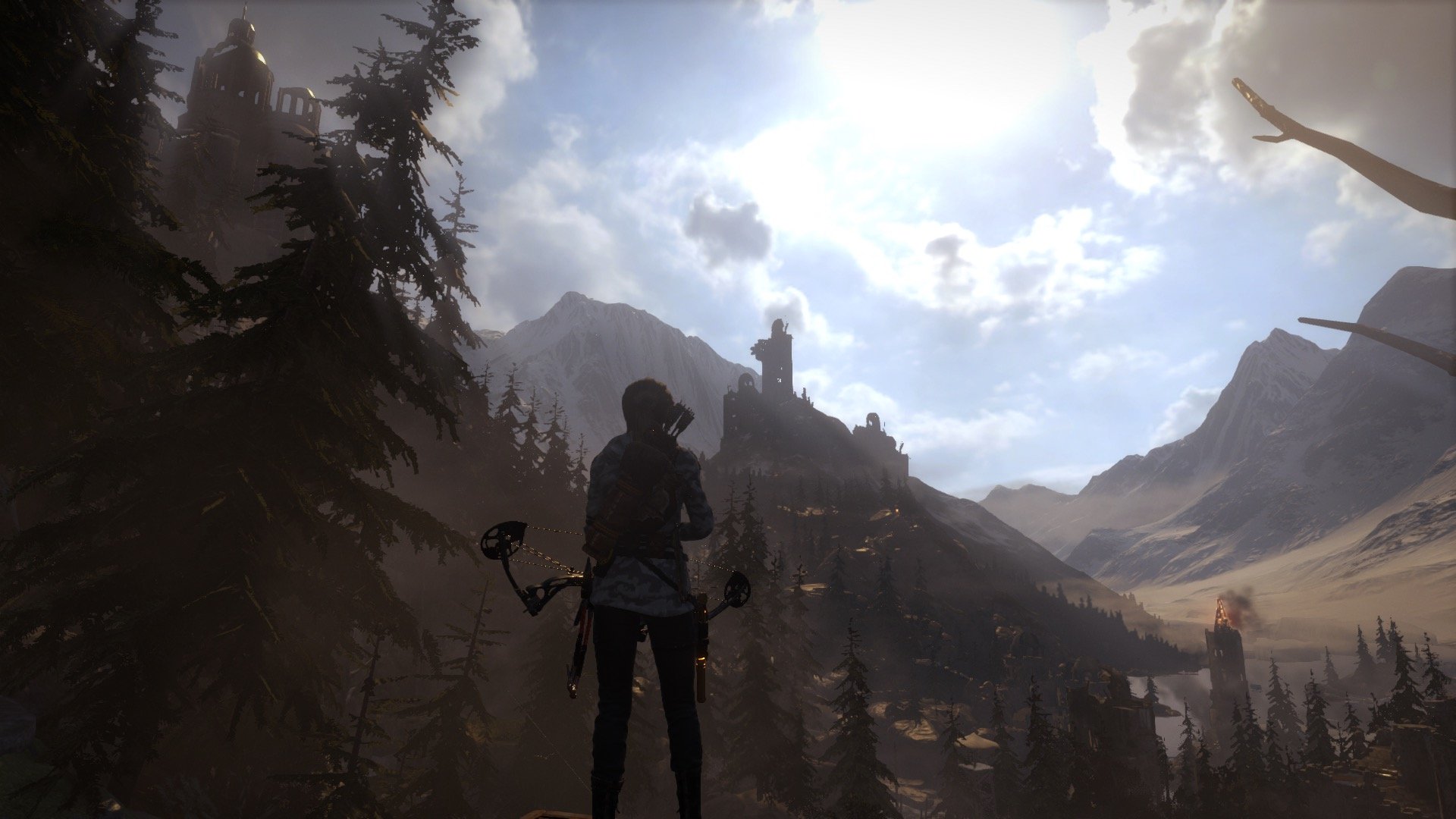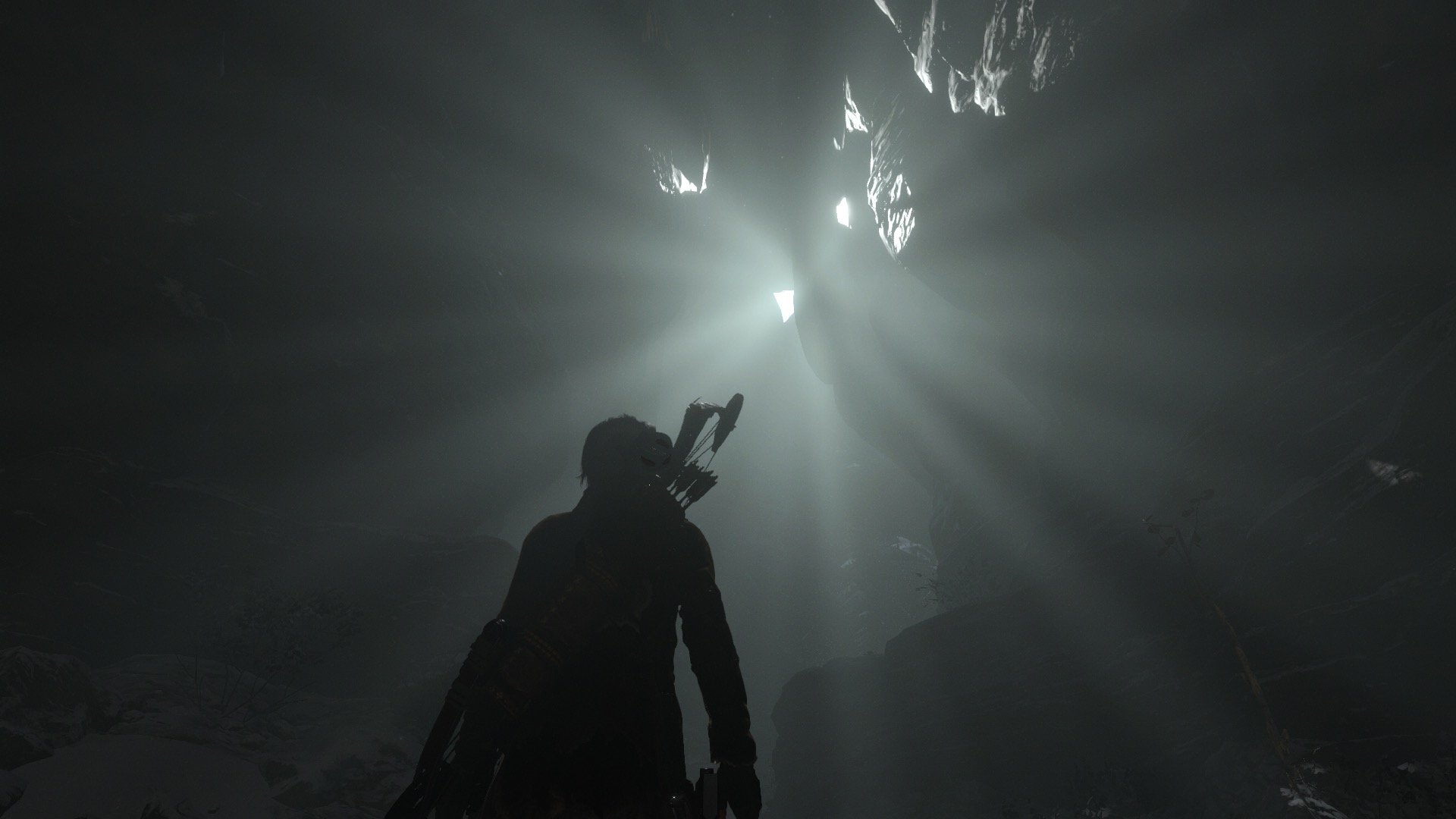Rise of the Tomb Raider's big problem will never go away
My Lara Croft killed about 657 people in a span of 30 hours, which works out to a brisk 22 kills per hour. As far as murder mileage goes, it’s … is “impressive” the right word? I don’t know, but it’s hard to reconcile with Rise of the Tomb Raider’s suggestion that Lara is a human being herself, never mind someone who also exudes shades of regret and fragility. But this is, again, my Lara Croft: the one who has to exist simultaneously as the central figure in a story, and as the actuator for my part in a commercial video game.
Assuming we disregard Lara’s sheer quantity of killing as ‘gameplay only’, as something deleted from the canon as we construct it in our heads, I wonder why it’s important at all. Having the story play out just so, without dissonance, suggests that movies and books are telling the stories the familiar way - the ‘right’ way. Is it so bad to simply say … so what if this doesn’t make sense? Is it really a debilitating problem for a video game character to be archaeologist, human, and skilled man-smasher? The game part is messing up a whole bunch of things to begin with.

Something as unremarkable as the difficulty level you choose in Rise of the Tomb Raider can warp its story in an unforeseen way. On more challenging modes, in which enemies pursue Lara ruthlessly and murder her with ease, you’re more likely to believe the conceit that she is killing to survive. When the game pushes back against failure especially hard, Lara seems less like a vicious predator and more like a vulnerable person again. If you mess up, you get plenty of game-over evidence for the case against being a nice, fair, morally conflicted person.
Furthermore, it emphasizes a genuinely interesting - and playable - statement buried inside Rise of the Tomb Raider. Violence, for someone as scarred and driven as Lara Croft, is the easy option. There are plenty of situations in Rise of the Tomb Raider which can be defused with patient observation, painstaking sneaking and out-of-the-box thinking. Except, right there at the campfire, all the goons are gathered near a flammable cannister and oooh, you’re so tempted to just fire off the arrow and disintegrate them.

In recreating Lara Croft as a believable virtual character, both in terms of extravagant visual fidelity and her guttural reactions to this sort of game’s obligatory perils, Crystal Dynamics has shifted our perceptions ever so slightly. It’s a new form of the uncanny valley: the more realistic Lara becomes, and the more rooted she is in a harsh environment, the more unbelievable her game-mandated acts become. She is inherently more believable and more human than any of her peers, but seems to fall short moments before her game’s grim realities take a toll on her mindset. She just seems too violent, and as a person we expect her to stop and wring her hands before she wrings some more necks. The problem is her game doesn’t serve this desire for a thoughtful pause at all - often because it is, well, a game.
Plenty of adventure movies get away with violence - when Indiana Jones guns down a sword-twirling buffoon in the street we laugh at the logical deftness on display from our hero. We don’t think “I thought I liked this chap, but I guess he’s pretty much a murderer - now I’m rooting for the police.”
It turns out one death is not equal to another. Editing has a huge say in whether someone’s demise is quick, gory, unimportant, funny, disturbing or drawn out (and quartered, if we’re talking Eli Roth). Meanwhile, over in video games, the player is the one in charge of the camera, usually as they swivel it ‘round and ‘round a realistic and fluid world. Whereas a film would cut away and soften the tone of Lara’s brutal survival tactics, we see everything in games for the sake of continuity and simulation. We see what’s under the table, what’s at the top of the mountain, and how a man squirms as he’s choked into oblivion by a bow string.
Weekly digests, tales from the communities you love, and more

The weird part is that you might enjoy the violence not for the gore, but as a product of successfully plundering the game’s possibilities. Your victory is unavoidably represented in the form of a violent animation, which is probably why it seems as if Lara Croft enjoys a good neck-stab, even when the fiction protests. We might think of the game’s open scenarios and stealth-action blend as a ‘playground’, a word that could be furthest from Lara’s mind. But her mind is not the only one there.
Since you’re the one giving impetus to many of Lara’s actions, it might be more important for you to consider a protagonist’s moral implications, rather than having them do it on screen. The full story is not just represented in the game, but in the space between it and the player. Shrugging it off is less satisfying, though, when you’re legitmately yearning to see Lara’s decisions debated in the game - not through cutscenes, but action. Why isn’t there some other way to interact that acknowledges both Lara’s internal state and the reason we are likely to recoil from her? Obviously, Rise of the Tomb Raider isn’t really built as a game that would do proper justice to a serious topic like post-traumatic stress disorder or obsession, but even a minor, playable diversion would be preferable to plastering it over with some cursory dialogue, which is what happens.

Still, our own interference in the process just makes a mess of things, no matter how you look at it. The outlines of what can be cut without harming the game or the story become harder and harder to make out. Perhaps it’s a writing problem, a missed opportunity to make the protagonist a more interesting person. Maybe it’s a game problem, in that the protagonist we need couldn’t exist as person inside the constraints of thrilling spectacle (which also has to sell well).
I’m certainly not going to suggest a solution to The Problem - but I’d like to think that the quest to find for one is the very thing that makes video games so great. It’s a game problem, not just a Lara problem. The story is a bug and a feature.
Ludwig Kietzmann is a veteran video game journalist and former U.S. Editor-in-Chief for GamesRadar+. Before he held that position, Ludwig worked for sites like Engadget and Joystiq, helping to craft news and feature coverage. Ludwig left journalism behind in 2016 and is now an editorial director at Assembly Media, helping to oversee editorial strategy and media relations for Xbox.



